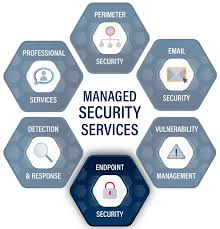Understanding What Influences Remote IT Support Costs
Remote IT support costs vary widely depending on company size, service scope, and location. Many U.S. small businesses choose monthly support plans rather than hourly or project-based models. On average, managed services run between $100 and $250 per user per month, while per-device pricing ranges from $50 to $150 per workstation. Larger setups like servers or network devices may cost between $100 and $400 or more per device per month. Hourly rates for break/fix support typically range from $75 to $200 per hour, with premium assistance hitting $150 to $300 or more depending on complexity.
Factors That Influence IT Support
Several key factors influence these prices. Service level expectations have a major impact—if you need 24/7 support or guaranteed fast response times, costs go up. Similarly, cybersecurity and compliance requirements like HIPAA or SOC 2 elevate pricing due to their complexity. Businesses using hybrid systems, cloud setups, or intricate network configurations will generally face higher costs. Location also plays a role: providers in New York, San Francisco, or Los Angeles tend to charge more due to higher labor costs.
What Do You Get From Professional Service Providers?
U.S.-based providers structure their services with clear tiers to accommodate business needs. The most professional companies offer a strategic mix of IT support, monitoring, consulting, and cybersecurity—all tailored to your growth goals and industry.
Pricing Models Used by Remote IT Providers in the USA
Per-User vs. Per-Device Pricing: What’s the Difference?
One of the most popular models is per-user managed service pricing. This typically ranges from $125 to $250 per user per month depending on services included. It covers the individual’s workstations, software, and sometimes cloud access and security. It’s ideal for businesses that scale based on staff count.
Per-device pricing, on the other hand, involves charges per workstation, server, or network component. Workstations might cost $50–150 each per month, while servers or firewalls can cost significantly more. This model is often chosen by companies with multiple devices per user or who maintain a lot of on-premises hardware.
Flat-Rate Monthly Plans: Are They Worth It?
Flat-rate or retainer-based pricing offers a predictable monthly fee for a full suite of IT services. These can range from $1,000 to $5,000+ per month depending on the size of the business. Small businesses with 20 to 50 users typically fall in this range. Flat-rate plans are great for companies wanting fixed IT costs and complete coverage including helpdesk, monitoring, updates, and strategy.
Break-fix or project-based support is charged hourly, ranging from $100–200/hr. Emergency or after-hours rates may reach $300–500. While this may seem flexible, it often leads to unpredictable bills and reactive IT management.
Comparison Table: Remote IT Support Costs
| Pricing Model | Average Cost Range | Best For |
| Per-User | $125–$250/user/month | Growing teams |
| Per-Device | $50–$150/workstation; $100–$400/server | Device-heavy operations |
| Flat-Rate | $1,000–$5,000+/month | Predictable, comprehensive needs |
| Break-Fix (Hourly) | $75–$200/hour; $300–$500/emergency | Occasional or emergency support |
Scaling Remote IT Support Costs
Your company’s size and specific technology requirements will directly affect your IT support expenses. A micro business with 1 to 10 employees might spend around $500–1,500 per month, especially if they only need basic support. Larger small businesses (11 to 50 users) typically fall into the $1,500–7,500 per month range. Costs grow as you add more users, demand faster response times, or introduce more complex setups like hybrid cloud networks.
How SLAs and 24/7 Support Change the Price
If your operations can’t afford downtime, you may need service-level agreements (SLAs) that guarantee fast response or resolution times. These typically raise prices by 20–30%. Businesses requiring 24/7 support, weekend coverage, or response within one hour must be prepared to pay for premium support. On the other hand, lower-tier support with longer response times can save money but may risk delays in urgent scenarios.
Compliance Needs Drive Up IT Costs
Companies in highly regulated industries like healthcare, law, or finance also pay more. Their systems need constant monitoring, strict access controls, and comprehensive compliance documentation. These factors increase the complexity—and cost—of IT services.
Real-World Remote IT Supports Cost Examples from U.S. Businesses
A Reddit-based IT firm reported managing 10-user clients at around $1,500–1,800/month with server upkeep and antivirus protection. Another firm in a metropolitan area charged between $150 and $200 per user monthly for complete coverage. Even small teams must often commit to $1,500/month minimums to access professional-grade support.
These examples align with the general trend: professional service costs are justified by higher uptime, fewer emergencies, better cybersecurity, and ongoing strategic guidance.
Tailored Solutions and Transparent Pricing with RES
Choosing the Right Plan for IT Support Costs for Your Small Business
The right pricing model will align with your business’s structure, technical footprint, and growth expectations. At Remote Expert Solutions (RES), we help U.S. small businesses choose the most efficient and affordable service model based on their actual needs.
Our per-user plans start at $125/month and can scale with added features like compliance, cloud services, and cybersecurity. Enhanced packages including 24/7 helpdesk, threat detection, and system monitoring range between $175–250 per user/month.
Choosing the right IT support provider can make all the difference for your business’s efficiency and security. Many small businesses in the USA rely on trusted solutions such as Microsoft’s Small Business IT Support to keep their operations running smoothly. For organizations looking for scalable and secure options, exploring Cisco’s Managed IT Services can provide a clear understanding of how remote and managed support can enhance productivity while reducing costs.
We also offer minimum monthly commitments for micro-businesses, starting around $1,000/month. Flat-rate packages are available for businesses with stable IT environments. Hourly and project-based pricing is offered for companies with ad hoc needs, typically ranging from $100–150/hour. Faster response times or emergency onsite dispatches are priced accordingly.
Why Choose RES Over Break-Fix Providers
RES specializes in providing scalable support that gives clients predictable costs, complete transparency, and peace of mind. Our goal is to offer more than just tech support—we act as a strategic partner helping your business grow securely and efficiently.
With our service, you can count on proactive monitoring, real-time ticket support, monthly performance reports, and the knowledge that your IT infrastructure is being managed by certified professionals.
FAQs on Remote IT Support Pricing in the USA
Q: What’s the average monthly cost for remote IT support for a small business?
A: Typically between $100 and $150 per user/month for managed services, or $500–2,000/month for companies with less than 10 users.
Q: Is per-user or per-device pricing better?
A: Per-user pricing is simpler and more scalable. Per-device may be more efficient if your team uses multiple workstations. Flat-rate pricing works well for predictable budgets.
Q: How much is hourly break/fix support in the U.S.?
A: Hourly rates range from $75 to $200+, based on issue complexity and provider region. Emergency support can cost more at $150–300/hour.
Q: Do SLAs affect cost?
A: Yes—faster response teams and 24/7 availability typically increase pricing by 20–30%.
Q: Will compliance needs raise costs?
A: Absolutely. Small businesses in regulated industries such as healthcare or finance should expect higher rates due to rigorous security protocols.
Summary
U.S. small businesses can expect to invest between $100–250 per user per month for managed remote IT Support Services, or around $500–1,500/month for smaller teams or flat-rate arrangements. While hourly rates are available, most businesses save time and money with managed plans.
At RES, we deliver flexible, transparent pricing with 24/7 support, rigorous security, and scalable plans built for growing U.S. small businesses. Want a personalized quote? Just reach out and we’ll design a plan tailored to your needs.






